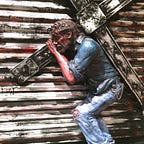Creating tension as a means of teaching solidarity
By Jennifer Maney, Jennifer Henery and Karen Ross: Is it okay for an instructor to amplify the tension in a classroom? Is it pedagogically appropriate for a teacher to make students sweat and squirm in their seats? As educators, we certainly think so — at least when done in the appropriate spirit and with the goal of making teachers and students more thoughtful, just, and responsible, and better prepared to live in solidarity with the real world.
“Solidarity is learned through contact rather than concepts,” Peter-Hans Kolvenbach, S.J., memorably told an international audience of Jesuit educators in 2000. “When the heart is touched by direct experience, the mind may be challenged to change. Personal involvement with innocent suffering, with the injustice others suffer, is the catalyst for solidarity which then gives rise to intellectual inquiry and moral reflection.”
So with this goal of transformation-for-solidarity in mind, we recommend a classroom exercise that challenges students to reflect with others on various social identities they’ve experienced in their lives. Drawing on Teaching for Diversity and Social Justice , an influential textbook in the field of diversity education, this exercise asks them to choose a social identity like their race, ethnicity, gender, sexual orientation, socio-economic status, faith tradition, or physical/emotional/developmental (dis)ability. Students then draw a timeline, charting the way the messages, behaviors, and values were enforced on them through that identity in each stage of their life. The timeline should also identify concrete examples of when these identities operated in their lives, where they came from, and how they were enforced. Once the timeline is complete, students share their stories in small groups, reflecting together about when they were first aware of their membership in a particular social group, when they experienced being treated differently because of that identity, and when they first witnessed another person being treated differently because of their identity.
This is a process that many find emotionally straining and personally challenging, especially when done in a group setting. But by causing students to examine their often unexamined ideas, beliefs, and behaviors around identity, we have found that they can come to greater clarity about the place of privilege, prejudice, bias, and fear — both in their experience and the experience of others. A further benefit is that this exercise allows participants to share meaningful stories that have the power to touch their peers affectively, preparing minds for intellectual change by first moving hearts.
In the 20 years since Kolvenbach delivered his message about Jesuit education forming people to live in solidarity with the real world, 5,600 people have been killed by police in the United States and 240,000 students have experienced gun violence in schools. Today, 2.3 million Americans are incarcerated and 44 million have no health insurance. Among those who have died of COVID-19, Pacific Islanders, Latino, Black and Indigenous Americans have a death rate double that of whites.
All this is what we have come to see as “normal.” It is the “real world.” This is the context within which people who have privilege and power must learn to live in solidarity.
As faculty at Jesuit colleges and universities where a great many of our students have not personally been involved in these kinds of suffering, we ought to feel that much more compelled, that much more responsible for ensuring that our students end up sweating and squirming a bit. Truthfully, if we do not create avenues whereby students can take the first steps in encountering the injustice that others suffer, then who will take such responsibility?
There are many ways that Jesuit institutions can live up to their expressed desire to serve marginalized people. Certainly, we can do better at ensuring that more First Gen students have access to the benefits of a Jesuit education. But we must also begin with the reality that many of our students simply need to learn how to interrogate their own limited experiences, open up to possibility of uncomfortable conversations with others about their experiences, and think critically about how they themselves can become active instruments in dismantling systems of exclusion and injustice that, unless we choose otherwise, will only continue to shape the real world in which we live.
Jennifer Maney is director of Marquette University’s Center for Teaching and Learning and a member of the National Seminar on Jesuit Higher Education. Jennifer Henery is a visiting professor in Marquette University’s Theology Department. Karen Ross is a visiting professor in Marquette University’s Theology Department and program director of the M.A. in Christian Doctrine.
The featured cover photo (above) is courtesy of Marquette University.
